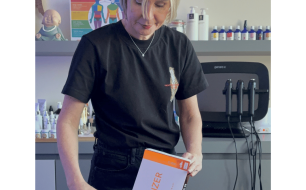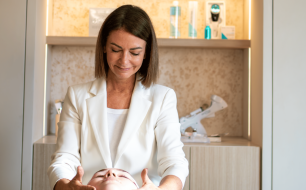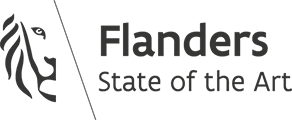Packaging is a major sustainability issue that affects everyone. Since the first report on the subject in 2021, Dr Grandel has celebrated several sustainability milestones. The approach is clear: every packaging is assessed for sustainability and, where possible and appropriate, improvements are made without compromising on corporate design.
Dr Grandel's recycling initiatives Climate-friendly adjustments by Dr Grandel in creation and packaging processes
Published on 25 jun 2024
Reading time:2 minutes
Paper transformation
In October 2021, the first success stories were shared. Today, Dr Grandel has progressed even further, as these figures show: While 2021 was still sitting at 70% conversion for folding cartons and 90% for sample packaging, 100% can now proudly be reported. This applies to DR. GRANDEL Cosmetics, PHYRIS and arabesque. Shipping boxes have also been converted to a 100% FSC mix. Even 100% of the silk paper used for online shopping packages has been replaced with recycled paper.
Tubes, jars and dispensers
The process is much more complicated with the so-called primary packaging materials such as tubes, jars and dispensers. Why? On the one hand, there are jars that are manufactured exclusively for Dr Grandel and, on the other, the brands in question have formulations that have been around for many years. Switching to other materials for primary packaging can also affect the final product. Then the process starts all over again.
Although there is still a way to go, several steps have already been taken. This means in figures:
- Conversion of dispensers to recyclable material: 98%
- Conversion of tubes to recyclate: around 80% (planned 100% by 2026)
- Conversion of jars (DR. GRANDEL) to recyclable material: about 70% (planned 100% by 2026)
Why is recyclable packaging so important?
The better packaging can be recycled, the more resources are protected, the more environmentally friendly the packaging itself is and the higher the CO2 savings from recycling. For example, recycling a tonne:
- used paper packaging saves 979 kg CO2 compared to incineration.
- used glass packaging saves 283 kg CO2 compared to incineration.
- used aluminium packaging saves 6,782 kg CO2 compared to incineration.
- used polystyrene packaging saves 4,683 kg CO2 compared to incineration.
How can the recyclability of packaging be determined?
The Central Packaging Register publishes minimum criteria for assessing recyclability. Whether and to what extent the packaging is recyclable depends on three minimum criteria according to the VerpackG:
- Is there a suitable sorting and recovery infrastructure for high-quality mechanical recycling of the packaging?
- Can the packaging be correctly sorted within the recycling cycle and separated into its individual material components?
- Does the packaging contain material components or substances that may prevent successful recycling?
By making conscious choices and striving for improvement, Dr Grandel contributes to a more sustainable future. Striving for 100% recyclable packaging helps to protect the planet.




